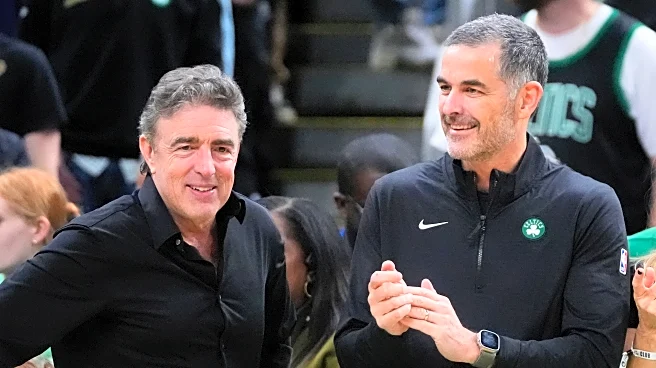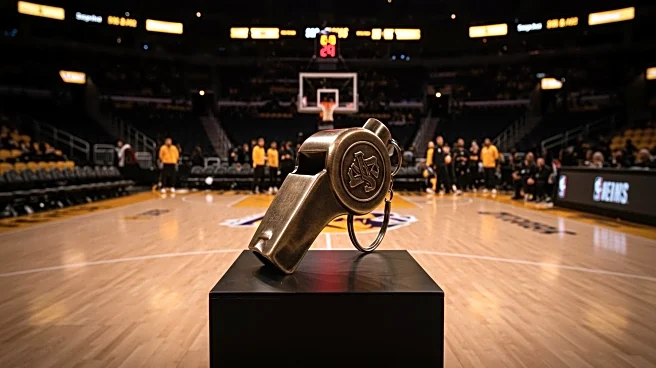What's Happening?
Tony Allen, a former defensive guard for the Boston Celtics, has revealed that Paul Pierce introduced boxing as a method to resolve team conflicts during the 2008 season. According to Allen, Pierce encouraged players to settle disputes by donning boxing gloves, a practice that became a unique tradition among the Celtics. This approach was initiated when Pierce confronted a teammate for perceived laziness, opting for a physical resolution rather than verbal confrontation. Pierce ensured fairness by providing gloves in various sizes, allowing all players to participate. The most notable boxing match involved Ray Allen and Rajon Rondo, who had a history of disagreements.
Why It's Important?
The unconventional conflict resolution method highlights the intense dynamics within professional sports teams, where personal differences can impact team performance. By introducing boxing, Pierce aimed to foster camaraderie and resolve tensions, potentially contributing to the Celtics' on-court chemistry despite internal conflicts. This approach underscores the importance of team cohesion in achieving success, as the Celtics managed to maintain their performance during this period. The story also reflects broader themes of leadership and innovative problem-solving in high-pressure environments.
What's Next?
While the boxing tradition is not likely to be adopted widely, it serves as a reminder of the creative strategies leaders can employ to manage team dynamics. Current and future sports teams may explore alternative methods to address internal conflicts, focusing on maintaining harmony and performance. The Celtics' experience may inspire discussions on effective leadership and conflict resolution in sports and other team-based settings.
Beyond the Headlines
The use of boxing gloves to resolve conflicts raises questions about the ethical implications of physical confrontation as a means of dispute resolution. It challenges traditional views on conflict management, suggesting that unconventional methods can be effective in certain contexts. This story may prompt further exploration into the cultural and psychological aspects of team dynamics in sports.













